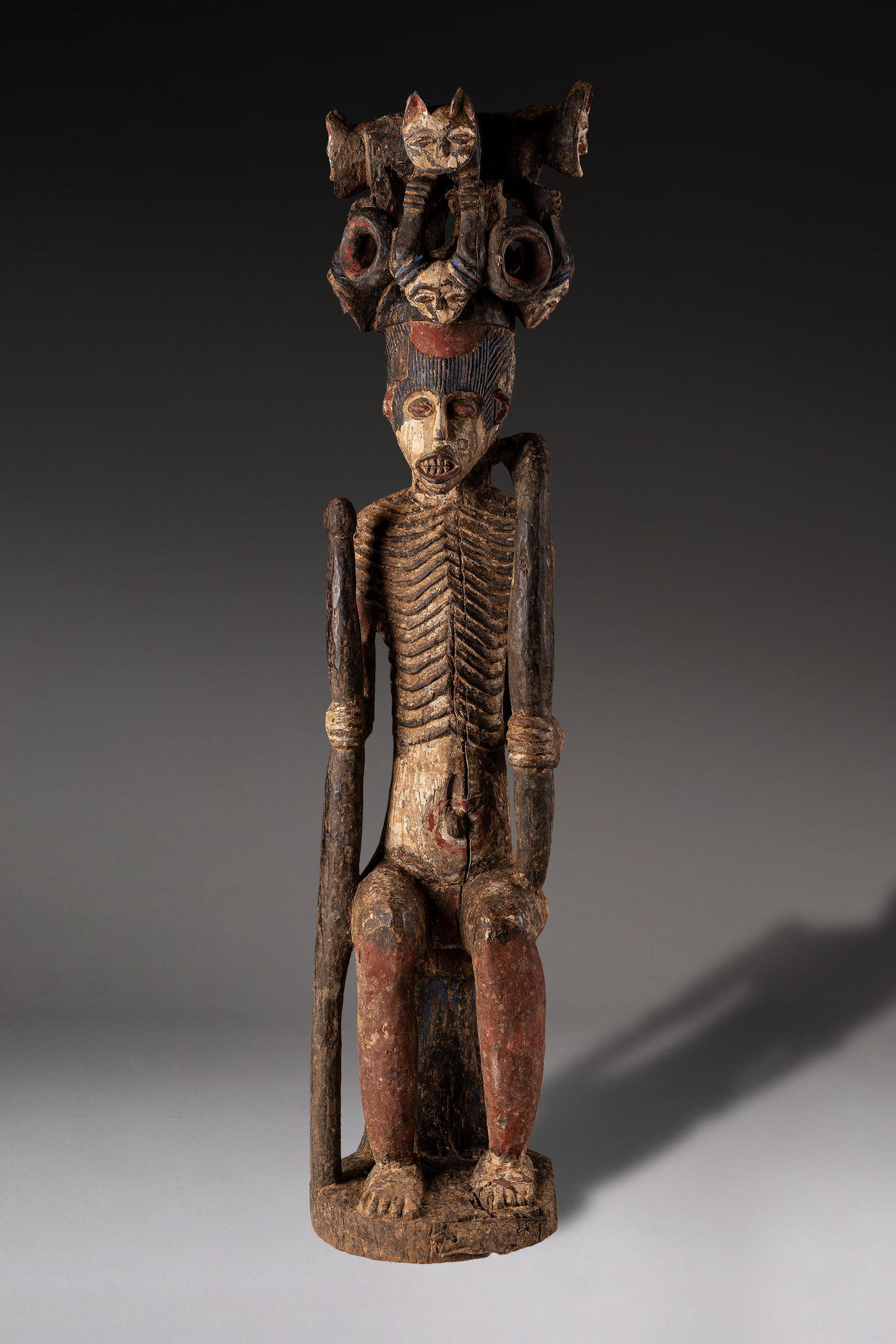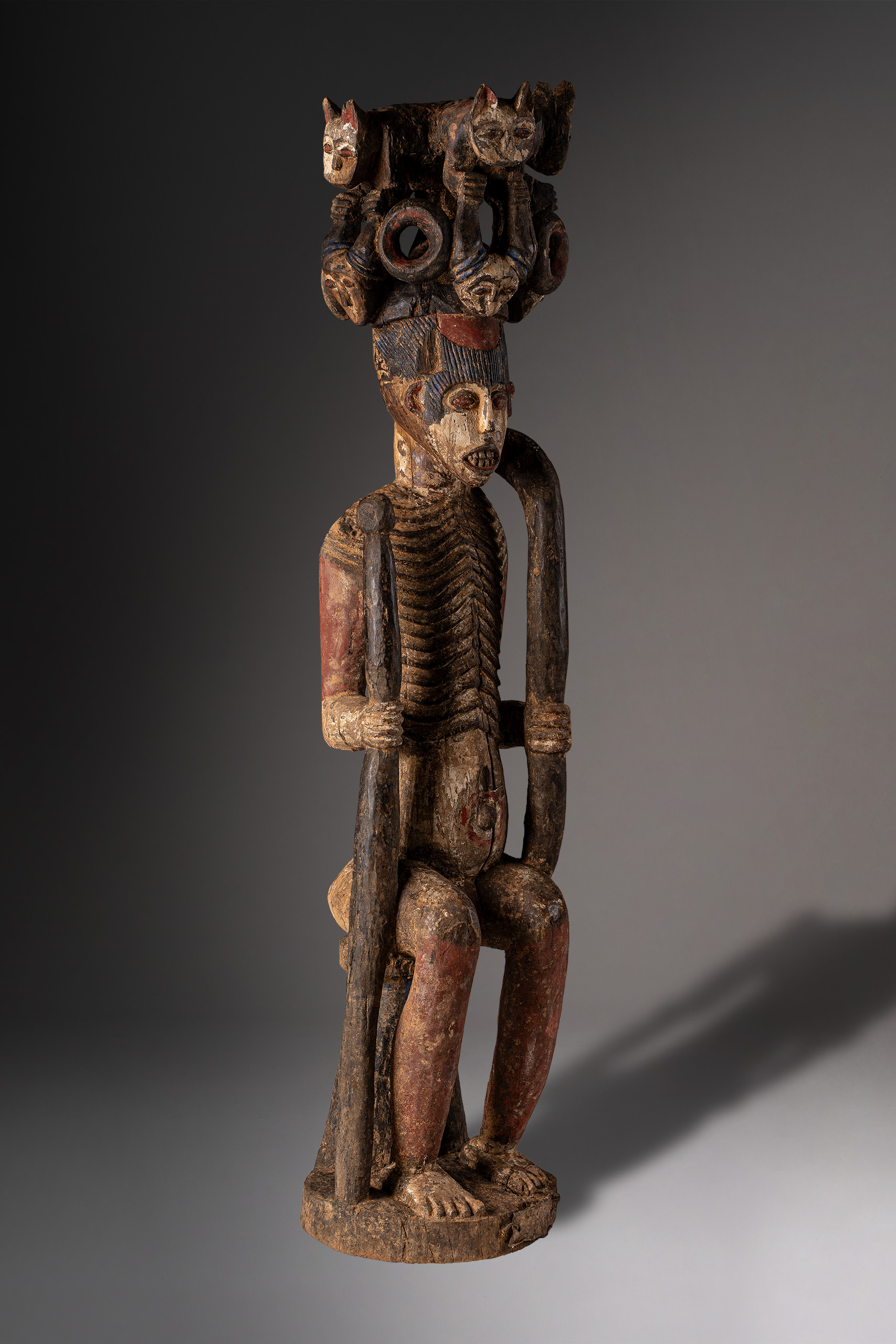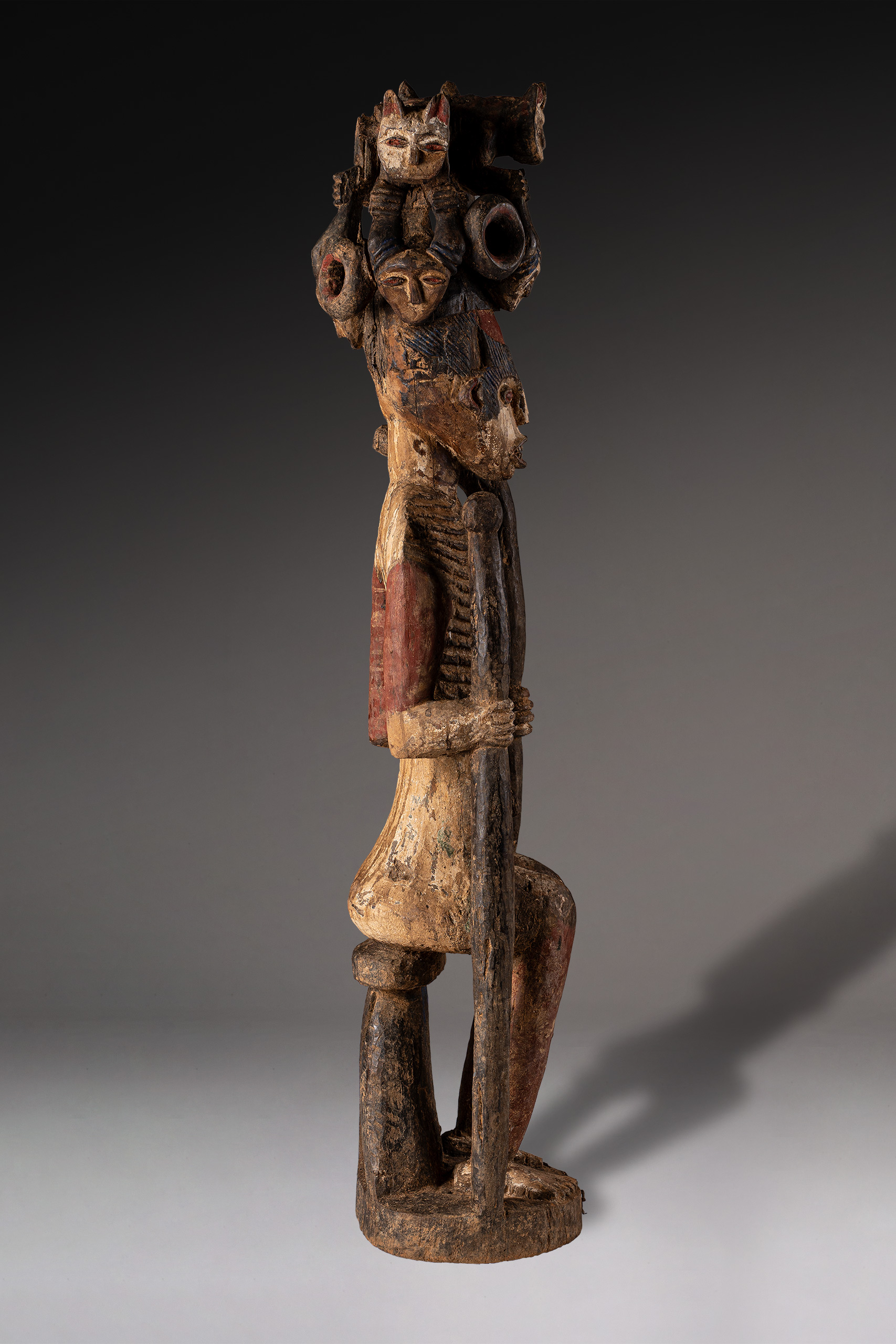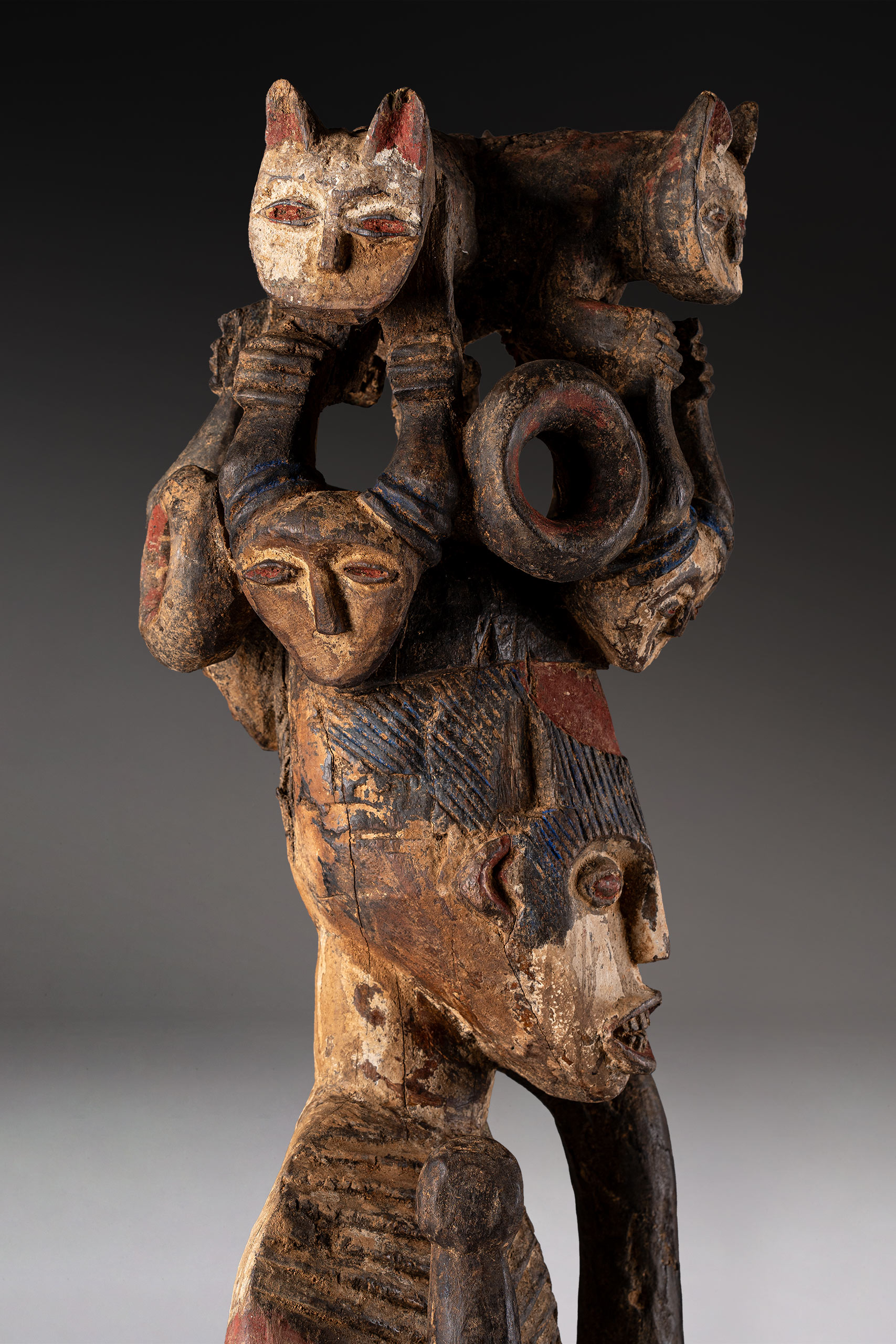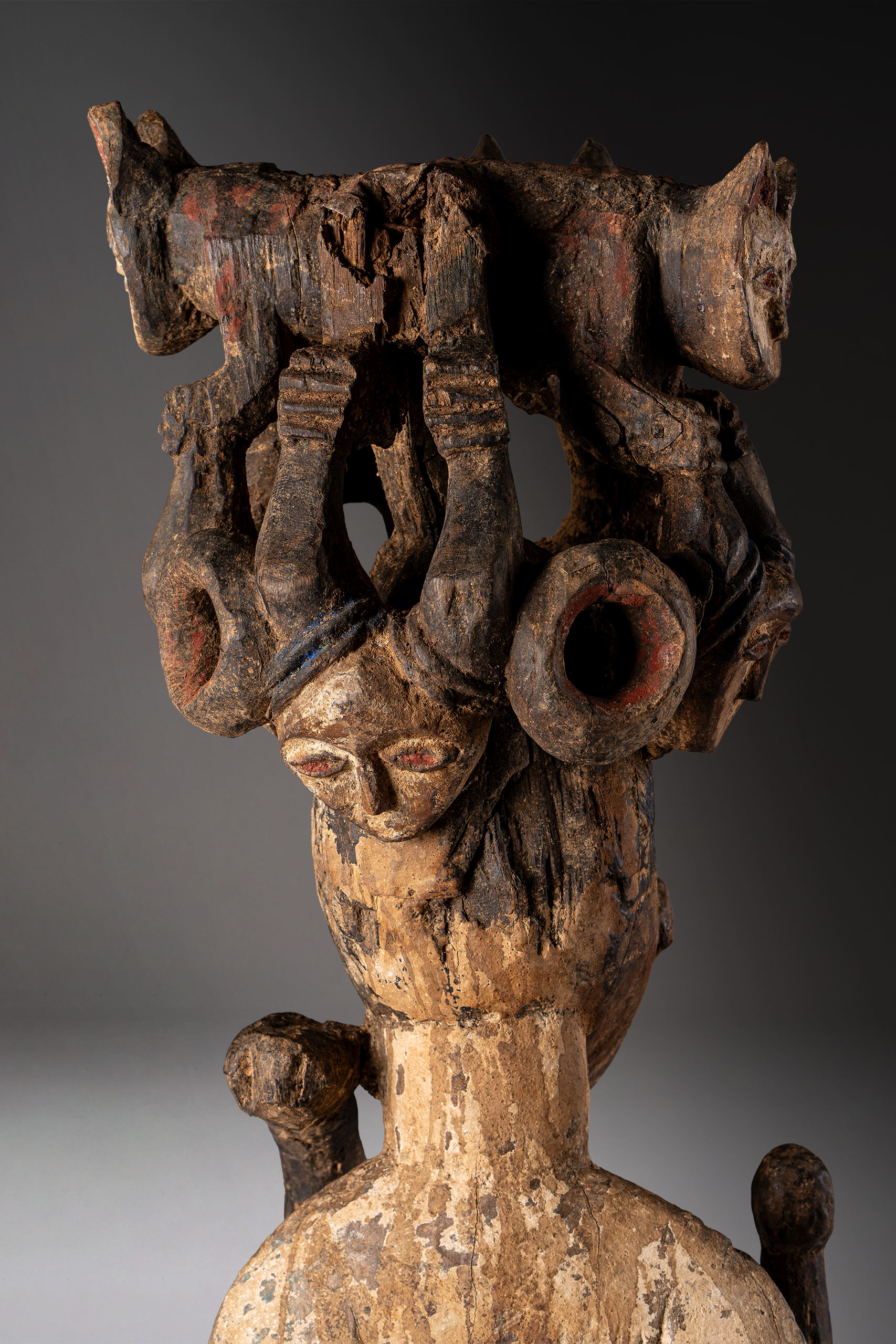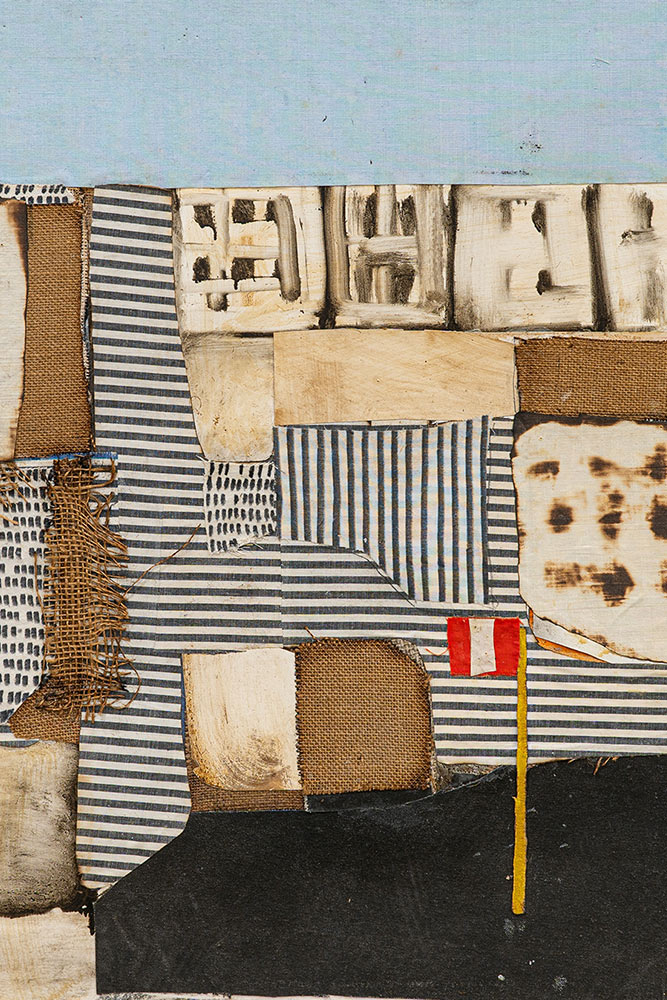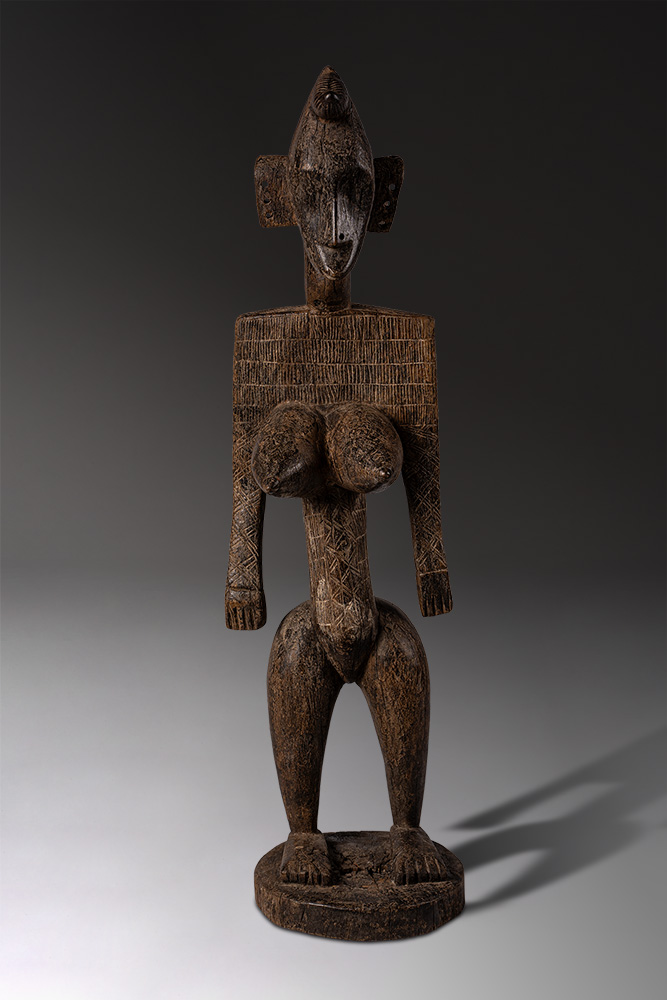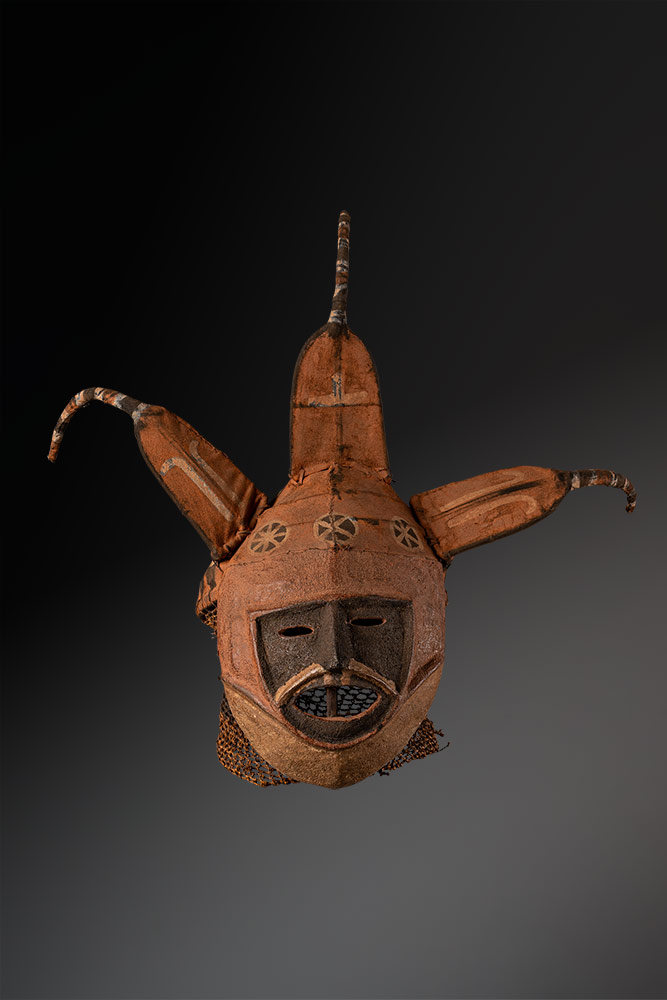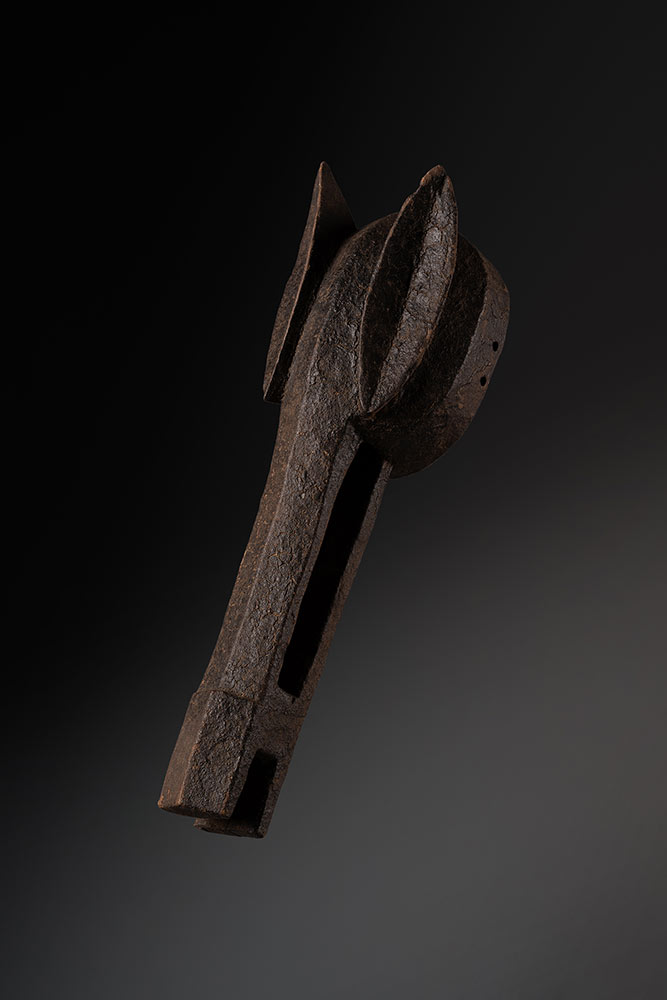Ikenga statue with animal superstructure
Origin: Nigeria
Culture: Idoma/Igbo
Materials: Wood, pigments
Dating: 19th century
Dimensions: 133 cm – 52,36”
The Ikenga is one of the most representative alusi in Igbo culture, known for its main attributes: horns that are often intricately carved into superstructures that can include carved animals. In its right hand, symbolising strength and power, it holds a curved blade or a tusk, while in its left hand it brandishes a scepter or another ritual object. The figure is typically depicted seated on a stool, a position that emphasizes its dignity and authority. As a symbol of military power, the Ikenga embodies the ideal warrior.
However, like other objects in this selection, the colour choices and body lines of these figures show the stylistic influence of neighbouring tribes like the Idoma or Yoruba. These influences suggest that the sculptures were created in a context of cultural syncretism, where different influences merge, or that they were modified to adapt to local needs or collectors’ tastes. They bear witness to the continuous cultural and commercial interactions that have occurred over the centuries among these communities, demonstrating the flexibility of artistic practices and the incorporation of common symbolic elements.

